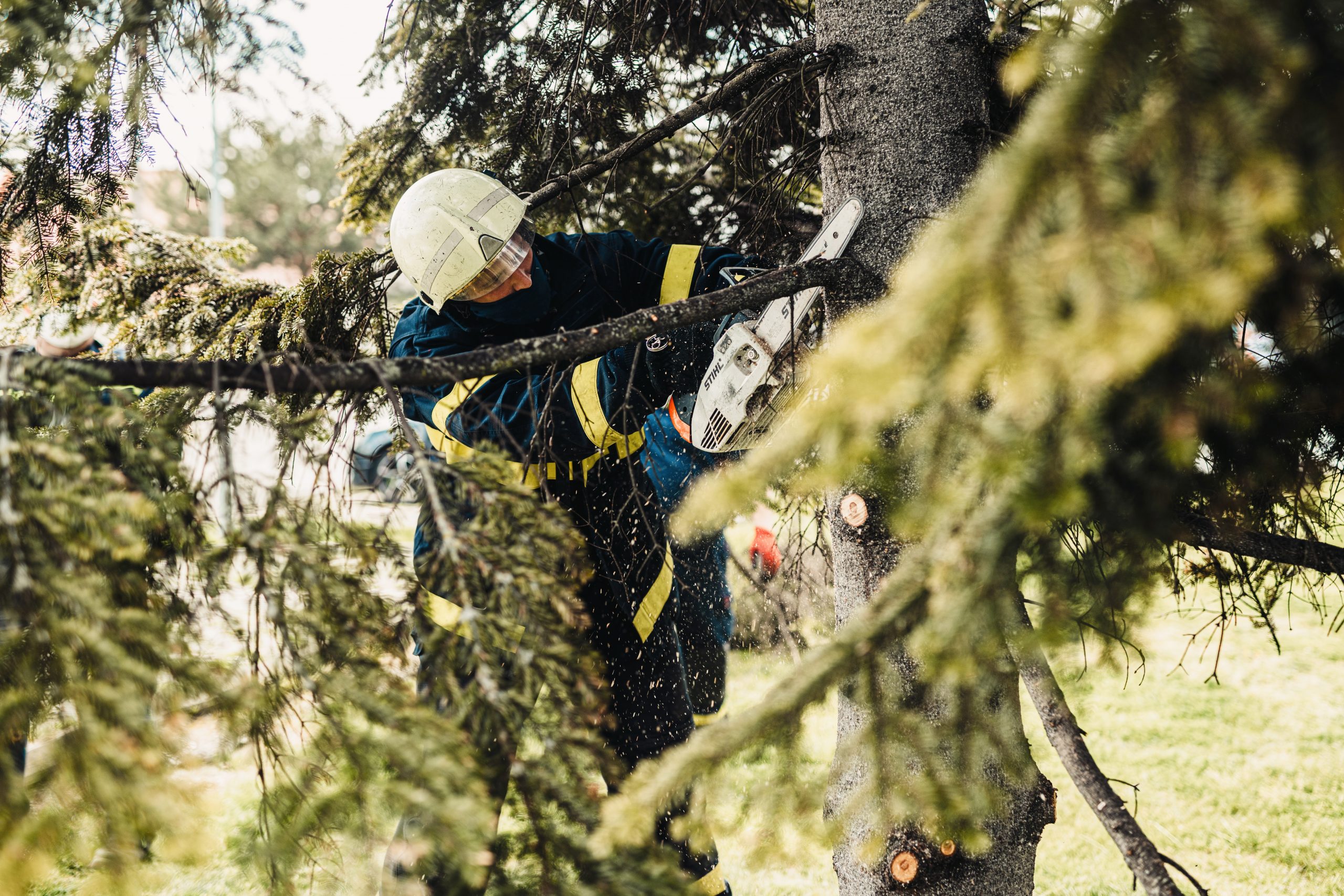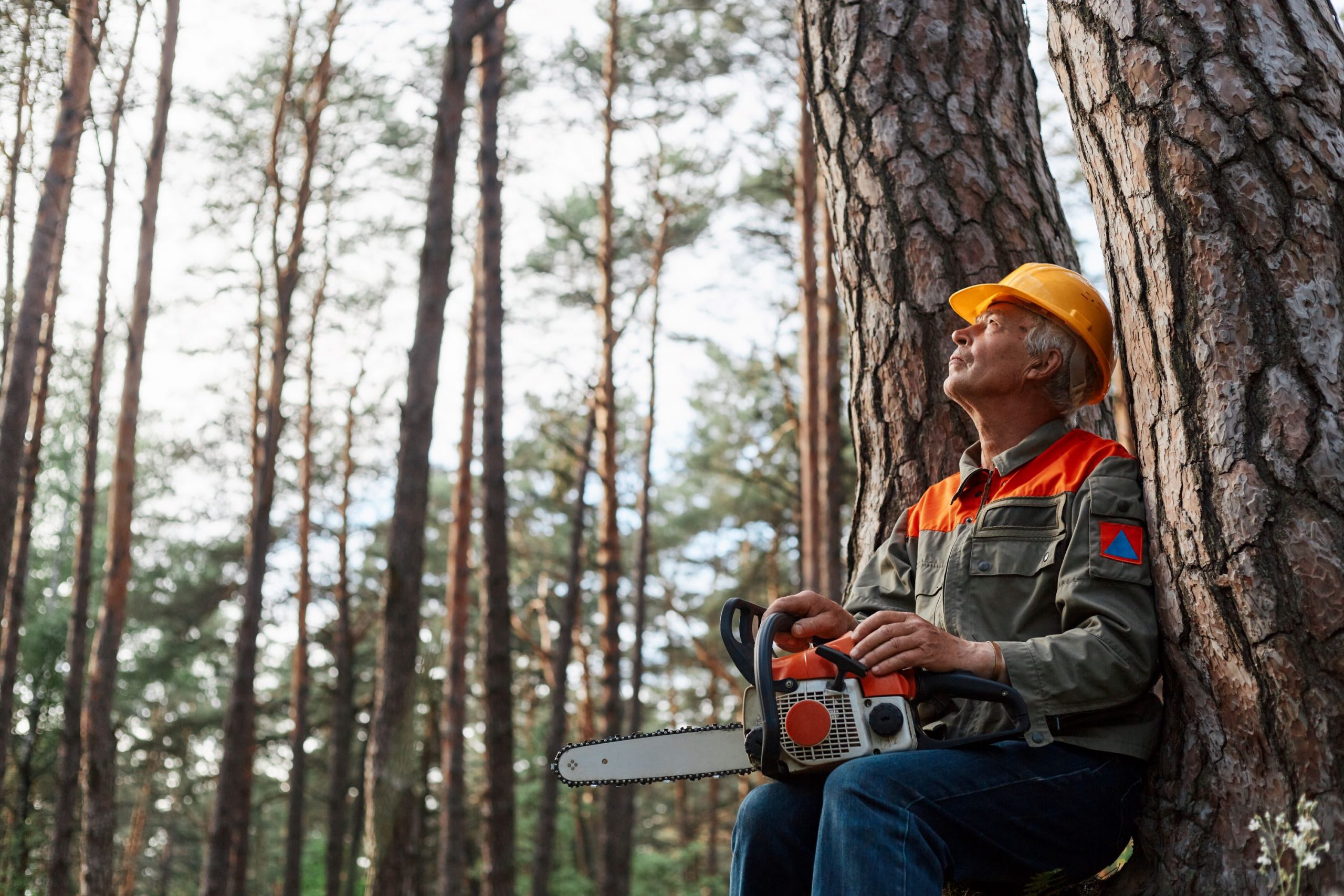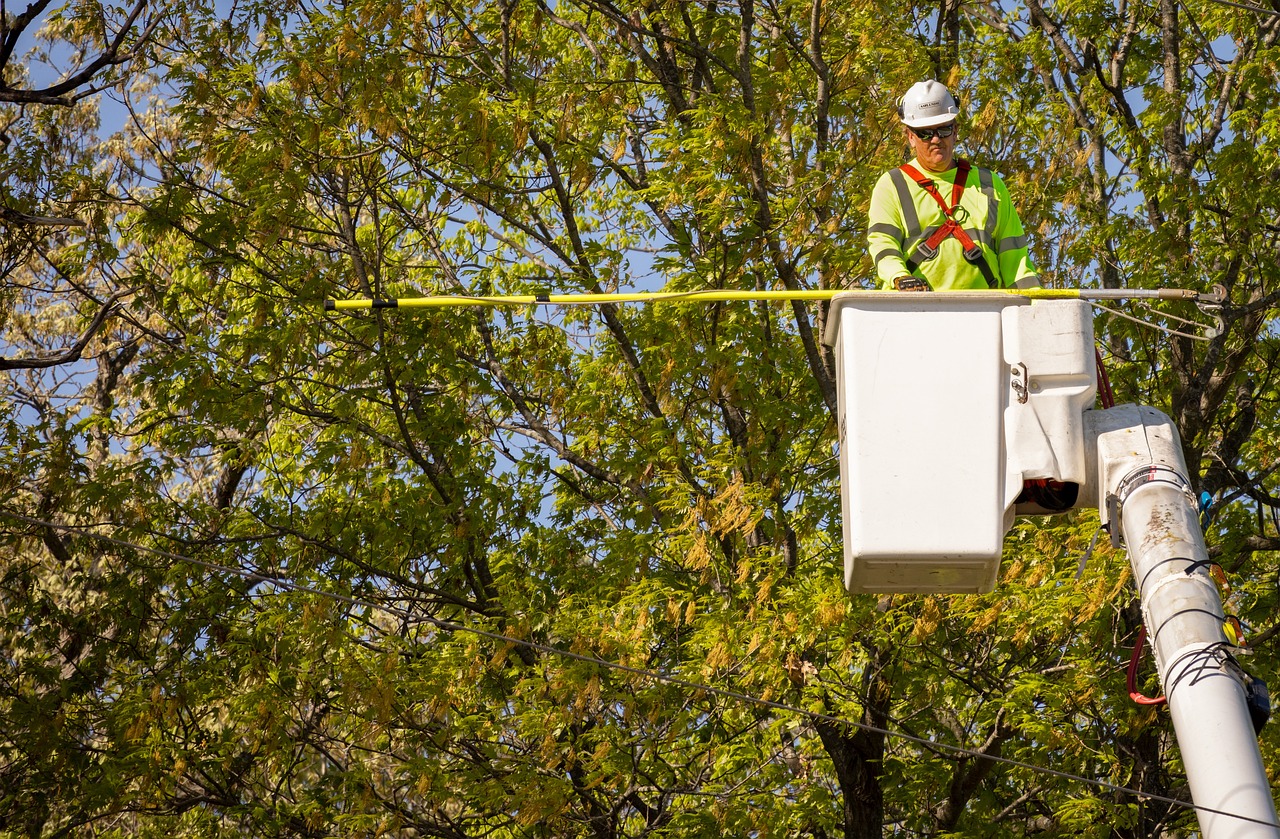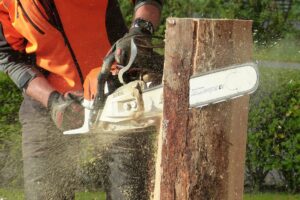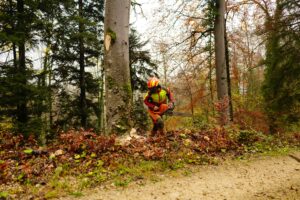Who is Responsible for Tree Removal?
Who is Responsible for Tree Removal?
Are you tired of looking out your window and seeing that unsightly tree blocking your view? Well, you’re in luck! In this article, we’ll delve into the fascinating world of tree removal safety and explore the history behind it. We’ll provide you with tips, traits, and skills necessary for safe and efficient tree removal. But that’s not all – we’ll also reveal the dos and don’ts, mistakes to avoid, and key takeaways to ensure you have all the knowledge you need. So, let’s dive in and discover who’s responsible for tree removal!
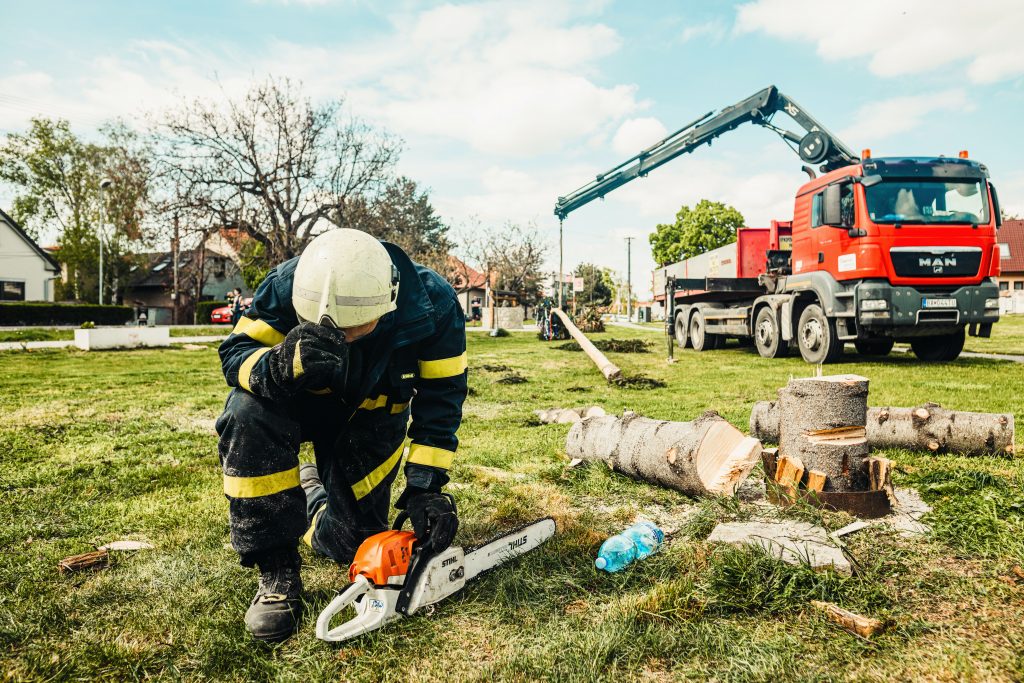
Key Takeaways
- Property owners are typically responsible for the cost of tree removal.
- Local government may take financial responsibility for trees on public property or posing a danger to public safety.
- Hiring professional arborists can ensure compliance with legal requirements.
- Property owners must obtain necessary permits before removing trees to avoid legal consequences.
Introduction to Tree Removal Safety
Before you start removing a tree, it’s important to understand the safety precautions involved. Tree removal can be a hazardous task, so it’s crucial to take the necessary steps to protect yourself and others. Here are some key safety measures to consider:
- Tree removal equipment:
- Use proper personal protective equipment (PPE), including gloves, eye protection, and a hard hat.
- Ensure that all cutting tools, such as chainsaws, are in good working condition.
- Use appropriate rigging equipment, such as ropes and harnesses, when necessary.
- Common tree removal risks:
- Falling branches or trees: Assess the stability of the tree and remove any weak or dead branches before starting the removal process.
- Power lines: Be aware of nearby power lines and maintain a safe distance to avoid electrocution.
- Improper cutting techniques: Follow recommended cutting techniques to prevent accidents and injuries.
Tree Removal History
During this period, you were likely unaware of the extensive history behind the removal of trees in your area. Tree removal has been an essential practice for centuries, dating back to ancient civilizations. However, the techniques and equipment used for tree removal have significantly evolved over time.
In the past, tree removal techniques were often labor-intensive and involved manual labor, such as axe cutting and hand sawing. As technology advanced, more efficient methods were developed. Today, tree removal techniques include using chainsaws, cranes, and specialized equipment like tree spades and stump grinders. These tools enable professionals to remove trees quickly and safely.
Tree removal equipment has also seen significant advancements. In addition to chainsaws, professionals now use aerial lift trucks, wood chippers, and tree climbers to aid in the removal process. These tools allow for better precision and efficiency, minimizing damage to surrounding structures and landscapes.
Understanding the history of tree removal techniques and equipment is crucial for both homeowners and professionals. By knowing the evolution of these practices, you can make informed decisions when it comes to tree removal in your area.
Now that you have a better understanding of the history of tree removal, let’s move on to some essential tips for safely removing trees from your property.
Tips
When it comes to tree removal, there are several important factors to consider. First and foremost, it is crucial to be aware of the legalities surrounding tree removal in your area. Hiring professional arborists who are knowledgeable about local regulations and have the necessary permits is essential to ensure compliance with the law. Additionally, it is crucial to consider the environmental impact of tree removal and to explore alternative options whenever possible, such as tree relocation or pruning.
Legalities of Tree Removal
The legalities of tree removal can vary depending on local regulations and the specific circumstances. Before removing a tree, it is important to check if a tree removal permit is required in your area. Some cities and municipalities have specific guidelines in place to protect certain tree species or to preserve the aesthetic appeal of the neighborhood. Additionally, it is crucial to consider the financial responsibility associated with tree removal. In many cases, the cost of removing a tree is the responsibility of the property owner. However, if the tree is located on public property or poses a danger to public safety, the local government may take on the financial burden. Understanding these legal aspects is crucial to avoid any potential fines or legal issues. When it comes to tree removal, it is often advisable to hire professional arborists who are well-versed in local regulations and can ensure the job is done safely and efficiently.
Hiring Professional Arborists
To ensure the job is done correctly, hiring professional arborists is highly recommended. Arborists are trained and certified experts in the care and maintenance of trees. When it comes to tree removal, their qualifications are essential. A professional arborist will have the knowledge and experience to assess the health and stability of a tree, determine if removal is necessary, and execute the task safely and efficiently. They are equipped with the right tools and techniques to minimize the risk of property damage or personal injury. In terms of pricing, tree removal costs can vary depending on factors such as the size and location of the tree, the complexity of the job, and any additional services required. It is advisable to obtain multiple quotes from reputable arborists to ensure a fair and competitive price. Considering the environmental impact, removing a tree can have significant consequences, including habitat disruption and reduced air quality. Therefore, it is crucial to consider these factors before proceeding with tree removal.
Environmental Impact Considerations
Considering the potential consequences of removing a tree, it’s important to factor in the environmental impact. When a tree is cut down, it not only affects the immediate surroundings but also has wider implications for the ecosystem. Trees play a crucial role in reducing carbon footprint by absorbing carbon dioxide and releasing oxygen. Removing trees disrupts this balance and contributes to the overall increase in greenhouse gases. Additionally, trees provide habitat for various species, supporting biodiversity and maintaining the delicate balance of the ecosystem. By removing trees without considering these factors, we risk damaging the environment and the natural processes that sustain life. Understanding the carbon footprint and ecosystem impact of tree removal is essential in making informed decisions about our actions. Transitioning into the subsequent section, it is also important to consider the traits and skills required to responsibly handle tree removal.
Traits and Skills
Traits and skills required for tree removal include physical strength, knowledge of equipment, and problem-solving abilities. When it comes to tree removal, it is important to possess the necessary skills and traits to ensure the task is completed safely and efficiently. Physical strength is essential as it involves heavy lifting, carrying equipment, and maneuvering around the tree. Having knowledge of the equipment is crucial as it allows you to operate it effectively and safely. Understanding the different tools, such as chainsaws and ropes, will enable you to make accurate cuts and securely lower branches. Problem-solving abilities are valuable when faced with challenging situations, such as trees with complex structures or those growing near power lines or buildings. You must be able to assess the situation, develop a plan, and execute it accordingly. By possessing these skills and traits, you can confidently take on tree removal tasks, ensuring both your safety and the efficient completion of the job. Now that you understand the traits and skills required for tree removal, let’s delve into the steps for safe and efficient tree removal.
Steps for Safe and Efficient Tree Removal
When it comes to safely and efficiently removing trees, it’s important to follow a set of steps. By following these steps, you can ensure that the tree removal process is carried out smoothly and without any unnecessary risks. Here are the four steps to safely and efficiently remove trees:
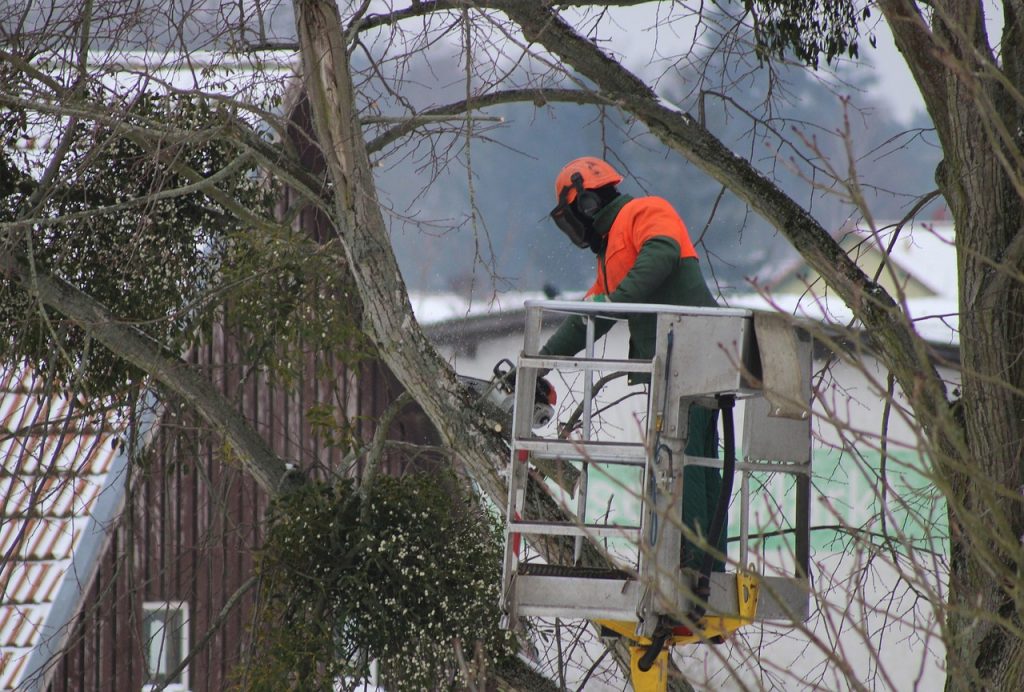
- Assess the tree: Before starting the removal process, it’s crucial to assess the tree and its surroundings. Look for any potential hazards such as power lines, nearby structures, or uneven terrain. This will help you determine the best approach for removing the tree.
- Choose the right equipment: Having the proper tree removal equipment is essential for a successful operation. Depending on the size and location of the tree, you may need chainsaws, ropes, harnesses, and even cranes. Using the right equipment will ensure that the tree is removed efficiently and without causing any damage.
- Employ appropriate techniques: Different tree removal techniques are employed based on the specific circumstances. This includes methods such as directional felling, controlled dismantling, or crane-assisted removal. Choosing the right technique will depend on factors such as the tree’s size, location, and surrounding obstacles.
- Ensure safety precautions: Safety should always be a top priority during tree removal. It is important to wear protective gear, such as helmets, goggles, and gloves, to protect yourself from potential injuries. Additionally, establishing a safe work zone, using proper cutting techniques, and having a team of trained professionals can help minimize risks.
Goals
In order to ensure safe and efficient tree removal, it is important to establish clear goals and develop effective implementation strategies. These goals and strategies serve as a roadmap to guide the entire process, from assessing the tree’s condition to executing the removal. By having a clear vision of what needs to be accomplished and how to achieve it, you can minimize risks and maximize efficiency.
To help you understand the importance of goals and implementation strategies, let’s take a look at the following table:
| Goals | Implementation Strategies |
|---|---|
| Ensure safety | Conduct thorough inspections and risk assessments before starting the removal process. Provide training and proper equipment to the tree removal team. |
| Minimize damage | Use appropriate rigging techniques to control the tree’s descent and protect surrounding structures. Have a plan in place for debris removal and cleanup. |
| Maximize efficiency | Coordinate with utility companies to ensure the safe disconnection of power lines if necessary. Utilize specialized equipment to expedite the removal process. |
| Promote sustainability | Consider alternatives to complete tree removal, such as pruning or transplanting when feasible. Properly dispose of removed trees and recycle the wood whenever possible. |
By setting these goals and implementing the strategies mentioned above, you can ensure that tree removal is conducted safely and efficiently. Now, let’s move on to the habits for safe and efficient tree removal.
Subsequent section: ‘Habits for Safe and Efficient Tree Removal’
Habits for Safe and Efficient Tree Removal
To ensure safe and efficient tree removal, it’s crucial to develop habits that prioritize the well-being of both workers and the environment. By implementing proper tree removal techniques and utilizing the right equipment, you can make the process smoother and minimize any potential risks.
When it comes to tree removal techniques, it’s important to first assess the situation and determine the best approach. This may involve evaluating the tree’s condition, its surroundings, and any potential hazards. It’s also essential to follow industry standards and guidelines to ensure the safety of everyone involved.
Having the right equipment for tree removal is equally important. This includes chainsaws, ropes, harnesses, and other specialized tools. These tools not only make the job easier but also help in maintaining safety standards. Regular maintenance and inspection of equipment are also necessary to ensure they are in good working condition.
By developing habits that prioritize safety and efficiency, you can ensure a successful tree removal process. This includes wearing appropriate safety gear, communicating effectively with team members, and taking necessary precautions to protect the environment.
Now, let’s delve into a real-life story that highlights the importance of these habits and the impact they can have in the tree removal process.
A Real-Life Story
You can learn from a real-life story that highlights the importance of prioritizing safety and efficiency in the process of removing trees. A tree removal company was hired to take down a large oak tree in a residential area. The crew arrived with all the necessary equipment and began the process. However, they failed to properly assess the tree’s condition and underestimated its weight. As a result, when they cut the tree, it fell in the wrong direction, damaging nearby property and endangering the crew and residents. This incident serves as a cautionary tale, reminding us of the need to prioritize safety and efficiency in tree removal. By conducting a thorough assessment of the tree, utilizing the right equipment, and following proper procedures, similar accidents can be avoided. Real-life experiences like this highlight the importance of learning from mistakes and implementing measures to ensure the safety of both workers and the surrounding environment. Moving forward, let’s explore some insightful quotes from professionals in the field that further emphasize the significance of safety and efficiency in tree removal.
Quotes
When it comes to prioritizing safety and efficiency in removing trees, professionals in the field have shared insightful quotes that highlight the importance of proper procedures and caution. As one arborist wisely stated, “Tree removal is not a task to be taken lightly. It requires careful planning, skilled execution, and a deep understanding of the potential risks involved.” This sentiment is echoed by another expert who emphasized, “Always prioritize safety first. It may take a little extra time and effort, but it is crucial for protecting both the workers and the surrounding property.” These quotes serve as reminders that tree removal should never be approached haphazardly.
Real-life stories further emphasize the benefits and drawbacks of tree removal. For instance, one homeowner shared their experience of a tree falling dangerously close to their house during a storm. Thanks to the prompt removal carried out by professionals, a potential disaster was averted. On the other hand, cautionary tales remind us of the potential hazards involved in tree removal. Instances of inexperienced individuals attempting to remove trees themselves can result in accidents, property damage, or even loss of life.
Transitioning into the subsequent section about ‘secrets,’ it is important to understand that there are no shortcuts or quick fixes when it comes to tree removal. Rather than focusing on steps, it is crucial to reveal the hidden knowledge and strategies that professionals employ to ensure safe and efficient tree removal.
Secrets
Discovering the secrets of professionals in the field can provide valuable insights into ensuring safe and efficient tree removal. When it comes to tree removal, there are hidden dangers that can pose a risk to both the workers and the surrounding property. Professionals who have mastered the secrets of tree removal understand the importance of thorough planning and preparation. They know that assessing the tree’s condition and the surrounding environment is crucial to identify potential risks. By taking the time to carefully analyze the situation, they can develop a strategic approach to safely remove the tree.
One of the secrets to safe and efficient tree removal is understanding the proper techniques and equipment to use. Professionals have the knowledge and expertise to choose the right tools for the job, ensuring that the tree is removed in the most efficient and effective way possible. They also know how to properly use rigging systems and ropes to control the direction of the tree’s fall, minimizing the risk of damage to the surrounding area.
Insights on Safe and Efficient Tree Removal
Now that you know the secrets of responsible tree removal, let’s dive into some insights on safe and efficient tree removal techniques and the equipment used. When it comes to removing trees, it’s essential to employ the right techniques to ensure the safety of both the workers and the surrounding environment.
One common technique used in tree removal is called tree felling. This involves cutting down the tree at the base and allowing it to fall in a controlled manner. To do this, professionals use chainsaws or specialized felling axes to make precise cuts at strategic points. The direction in which the tree falls is carefully determined beforehand to avoid any damage to nearby structures or vegetation.
In addition to tree felling, other techniques like sectional dismantling or tree climbing may be employed based on the specific circumstances of the tree removal. Sectional dismantling involves cutting the tree into smaller sections and lowering them down using ropes and rigging equipment. Tree climbing, on the other hand, allows arborists to access and remove trees in hard-to-reach areas by climbing them with the help of harnesses and specialized climbing gear.
The equipment used in tree removal varies depending on the technique employed. Chainsaws, ropes, rigging equipment, climbing gear, and personal protective equipment (PPE) are some of the essential tools used by professionals.
Benefits of Safe and Efficient Tree Removal
Using the right techniques and equipment ensures the safe and efficient removal of trees, providing numerous benefits. When it comes to tree removal, employing proper techniques is essential to ensure the safety of both the workers and the surrounding environment. By following industry-standard tree removal techniques, such as directional felling or sectional dismantling, you can minimize the risk of accidents and damage to nearby structures. Additionally, using specialized equipment for tree removal, such as cranes, chainsaws, and chippers, allows for a more efficient and streamlined process.
One of the key benefits of safe and efficient tree removal is the preservation of surrounding vegetation. By employing techniques that minimize the impact on the surrounding environment, you can ensure that other plants and trees remain unharmed during the removal process. This is particularly important in urban areas where green spaces are limited and play a crucial role in maintaining air quality and biodiversity.
Furthermore, safe and efficient tree removal can help prevent property damage. By using the right equipment and techniques, you can avoid accidental falls or damage to nearby structures, such as houses, fences, or power lines. This not only protects your property but also reduces the risk of costly repairs and potential injury to individuals.
Lessons
When it comes to tree removal, there are several key points to consider. First, legal liability for removal is an important factor to address. Understanding the potential legal ramifications and responsibilities associated with tree removal is crucial. Second, environmental impact considerations should be taken into account, as the removal of trees can have significant effects on the surrounding ecosystem. Finally, the cost and financial responsibility of tree removal is an important aspect to discuss, as this can vary depending on the size and complexity of the job. It is essential to have a clear understanding of these key points in order to make informed decisions regarding tree removal.
Legal Liability for Removal
If a property owner fails to obtain the necessary permits, they may be liable for any damages caused by tree removal. It is important to understand the legal consequences of removing trees without the proper authorization. When trees are removed without permits, property owners can face penalties and fines imposed by local authorities. Additionally, if the removal causes damage to neighboring properties, the owner may be held responsible for the costs of repairs. It is crucial to check with your local municipality and obtain the required permits before proceeding with tree removal. In terms of insurance coverage, it is essential to review your policy to determine if tree removal is covered. Some policies may provide coverage for tree removal under specific circumstances, such as if the tree poses a threat to the property or if it has fallen due to a covered event. However, it is recommended to consult with your insurance provider to ensure you have appropriate coverage. When considering the environmental impact of tree removal, it is important to take into account various factors such as the ecological value of the tree, its contribution to air quality, and its role in preventing soil erosion. It is crucial to weigh the benefits and potential environmental consequences before deciding to remove a tree.
Environmental Impact Considerations
Now that you understand the legal liability surrounding tree removal, it’s important to consider the environmental impact of such actions. When trees are removed, it not only affects the immediate surroundings but also has broader consequences for the environment as a whole. One key aspect to consider is the carbon footprint reduction. Trees play a crucial role in absorbing carbon dioxide, a major greenhouse gas that contributes to climate change. Removing trees can disrupt this process and increase carbon emissions. Additionally, trees provide habitats for various species, supporting biodiversity preservation. By removing trees, we risk disturbing ecosystems and further contributing to the loss of biodiversity. Therefore, it is essential to carefully assess the environmental impact before proceeding with any tree removal. This consideration will help us transition to the subsequent section on cost and financial responsibility.
Cost and Financial Responsibility
One important aspect to consider is the potential financial impact of removing trees. When it comes to tree removal, cost estimation is crucial. The cost can vary depending on factors such as the size of the tree, its location, and the complexity of the removal process. It is recommended to consult with a professional arborist to get an accurate cost estimation. Additionally, it is essential to consider insurance coverage. In some cases, homeowners’ insurance may cover the cost of tree removal if the tree causes damage to the property. However, insurance coverage can vary, so it is important to review your policy and discuss it with your insurance provider. Understanding the potential costs and insurance coverage associated with tree removal is essential in making informed decisions about managing your property’s trees.
When it comes to managing your property’s trees, it is important to establish routines {yt}. These routines involve regular maintenance tasks such as pruning, trimming, and inspecting the health of the trees. By incorporating these routines into your property management plan, you can ensure the long-term health and safety of your trees.
Routines
There’s usually a set routine for tree removal in our neighborhood. The local authorities have established certain habits for efficiency when it comes to managing tree removal. First, they conduct regular inspections to identify any trees that pose a potential risk to the community. Once identified, they prioritize the removal of these trees based on factors such as proximity to residential areas, structural integrity, and potential damage they may cause. After prioritization, the authorities schedule the removal process, taking into account weather conditions and the availability of resources. They often work with professional arborists who have the necessary expertise and equipment to safely remove the trees. Throughout the process, the authorities ensure that all safety protocols are followed, including the cordoning off of the work area and the proper disposal of the tree debris. These routines and habits for efficiency ensure that tree removal in our neighborhood is done in a timely and organized manner, minimizing risks to the community and maintaining the overall aesthetics of the area.
Transitioning into the subsequent section about the pros and cons of tree removal, it is important to consider the potential advantages and disadvantages of this process.
Pros and Cons
Consider the benefits and drawbacks of removing trees in your neighborhood. There are both pros and cons to be considered when it comes to tree removal. On the positive side, removing trees can help clear space for new development or construction projects. It can also prevent potential hazards, such as falling branches or trees, especially during storms or high winds. Additionally, tree removal can create more sunlight for other plants and allow for better airflow. However, there are also downsides to removing trees. Trees provide numerous environmental benefits, including improving air quality, reducing noise pollution, and providing shade, which helps to cool down the surrounding area. They also contribute to the overall aesthetic and beauty of the neighborhood. Moreover, trees provide habitats for wildlife, promoting biodiversity. It is important to carefully consider both the pros and cons before making a decision regarding tree removal in your neighborhood.
When it comes to tree removal, there are certain dos and don’ts to keep in mind.
Dos and Dont’s
When it comes to removing trees in your neighborhood, it’s important to follow certain dos and don’ts. Proper tree removal ensures the safety of both the tree and those around it. To help you navigate this process, here are some key do’s and don’ts to keep in mind:
| Do’s | Don’ts |
|---|---|
| Hire a professional arborist | Remove trees without permission |
| Obtain necessary permits | Neglect proper equipment |
| Consider the impact on wildlife and surrounding vegetation | Ignore potential hazards |
Following these guidelines will help you avoid common mistakes and ensure a smooth and safe tree removal process. One common mistake is attempting to remove a tree without the expertise of a professional arborist. They have the knowledge and experience to assess the tree’s condition, determine the best approach, and execute the removal safely. Another mistake is removing trees without obtaining the necessary permits. This can lead to legal issues and fines. Additionally, neglecting proper equipment and safety precautions can result in accidents and property damage.
Mistakes to Avoid
To avoid mistakes during the tree removal process, make sure to hire a professional arborist who can assess the tree’s condition and execute the removal safely and efficiently. Common mistakes can occur when individuals attempt to remove trees themselves without the necessary knowledge and equipment. One mistake is underestimating the complexity of the task. Tree removal requires careful planning and consideration of factors such as the tree’s size, location, and potential hazards. Another mistake is failing to properly evaluate the tree’s health. A professional arborist can assess the tree for signs of disease, decay, or structural weaknesses that may affect the removal process. Additionally, not following safety protocols can lead to accidents and injuries. Preventive measures should always be taken, such as wearing protective gear, using appropriate tools, and securing the work area. By hiring a professional arborist, you can avoid these common mistakes and ensure that the tree removal process is carried out safely and efficiently. Key takeaways from this discussion include the importance of hiring a professional, evaluating the tree’s health, and following safety protocols to prevent mistakes and potential harm.
Key Takeaways
Make sure you evaluate the health of the tree, hire a professional arborist, and follow safety protocols to avoid potential harm during the tree removal process. Tree removal techniques vary depending on the size, location, and health of the tree. For smaller trees, a simple cut and removal may be sufficient. However, for larger or more complex trees, advanced techniques such as crane removal or sectional dismantling may be necessary. It is important to preserve trees whenever possible, as they provide numerous benefits to the environment and our well-being. Trees improve air quality, reduce urban heat island effect, and provide habitat for wildlife. Additionally, they enhance the aesthetic appeal of our surroundings. However, there are situations where tree removal becomes unavoidable, such as when a tree is diseased, dead, or poses a safety hazard. In such cases, it is crucial to take specific action steps for tree removal to ensure a safe and efficient process.
Specific Action Steps for Tree Removal
When it comes to tree removal, there are certain action steps that you need to follow to ensure a safe and successful process. First and foremost, it is crucial to hire professional arborists who have the expertise and experience to handle the job efficiently. Additionally, obtaining necessary permits from the relevant authorities is essential to comply with local regulations. Lastly, it is important to prioritize safety precautions during the removal process to protect both the workers and the surrounding property.
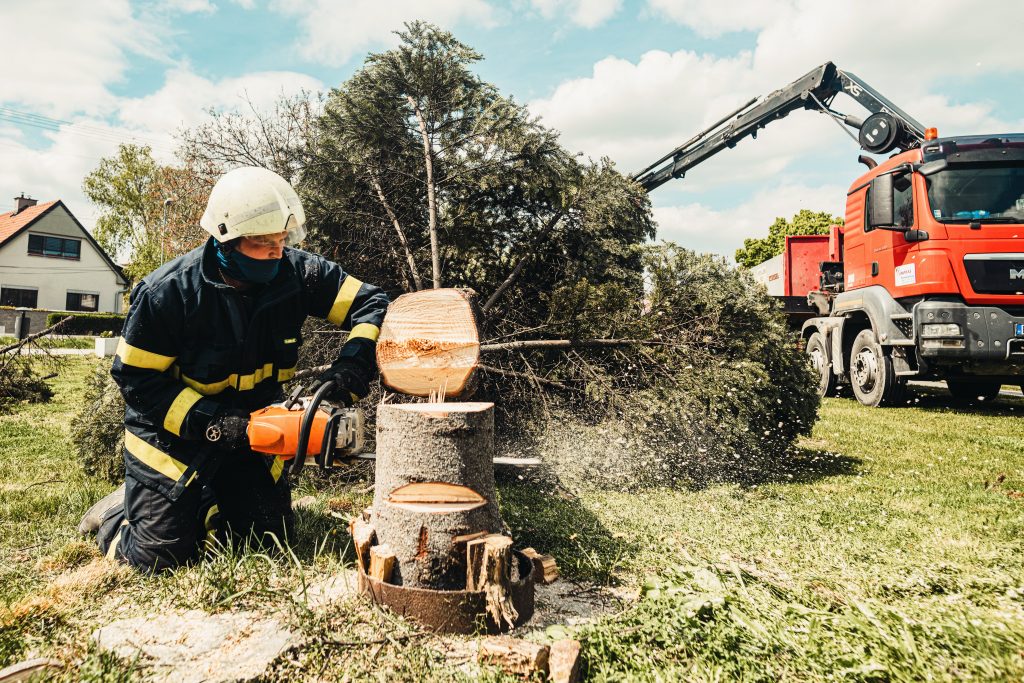
Hiring Professional Arborists
Hiring professional arborists is necessary for safe and efficient tree removal. When it comes to removing trees, it is important to choose qualified and experienced arborists who possess the necessary skills and knowledge. Arborists should have the proper certifications and qualifications, such as being certified by the International Society of Arboriculture (ISA). These professionals have the expertise to assess the condition of the tree, determine the best course of action, and safely remove it without causing any harm or damage. While the cost of hiring professional arborists may vary depending on factors such as the size and location of the tree, it is an investment worth making to ensure the job is done correctly and safely. Once you have hired an arborist, the next step is obtaining necessary permits to ensure compliance with local regulations and requirements.
Obtaining Necessary Permits
Before starting the tree removal process, it’s important to obtain the necessary permits to comply with local regulations. Obtaining permits ensures that you are following the proper procedures and guidelines set by your local government. These permits are necessary to ensure the safety of both you and the surrounding community. Local regulations vary, so it’s crucial to research and understand the specific requirements in your area. Contact your local government or forestry department to inquire about the permits needed for tree removal. They will provide you with the necessary information and guide you through the application process. By obtaining permits, you can proceed with the tree removal process confidently, knowing that you are in compliance with local regulations. Now that you have your permits in hand, it’s time to focus on the safety precautions during removal.
Safety Precautions During Removal
During the tree removal process, it’s crucial to follow safety precautions to ensure the well-being of everyone involved. When it comes to tree removal, proper safety measures should always be taken to minimize the risk of accidents or injuries. First and foremost, it is important to use the right tree removal equipment. This includes chainsaws, harnesses, ropes, and protective gear such as helmets and gloves. Additionally, tree removal techniques should be employed to ensure controlled and safe removal. These techniques may include tree felling, tree climbing, or the use of cranes or other machinery to safely bring down the tree. By adhering to these safety precautions, you can protect yourself and others from potential harm during the tree removal process.
Frequently Asked Questions
What Are the Legal Requirements for Tree Removal in My Area?
To remove a tree legally in your area, you need to obtain tree removal permits. Failing to do so can result in consequences such as fines or legal action. Make sure to follow the necessary procedures to avoid any troubles.
How Do I Choose the Right Tree Removal Service?
Choosing the right tree removal service is crucial. DIY tree removal may seem cost-effective, but hiring professionals ensures safety and expertise. Consider factors like experience, insurance, and customer reviews to make an informed decision.
Can I Remove a Tree on My Own, or Is It Better to Hire Professionals?
You might think you can remove a tree on your own, but it’s better to hire professionals. DIY tree removal can be dangerous and costly if you don’t have the right skills and equipment.
How Long Does It Typically Take to Remove a Tree?
Removing a tree can vary in time depending on factors like tree size, location, and complexity. Typically, the tree removal process can take a few hours to a few days. It is best to consult professionals for an accurate estimate.
Are There Any Potential Risks or Hazards Associated With Tree Removal That I Should Be Aware Of?
You should be aware of potential dangers and hazards associated with tree removal. It is important to take safety precautions to prevent accidents and injuries. Always consult a professional for help.
About Murray, Utah
Murray is a city situated on the Wasatch Front in the core of Salt Lake Valley in the U.S. state of Utah. Named for territorial governor Eli Murray, it is the state's fourteenth largest city. According to the 2020 census, Murray had a population of 50,637. Murray shares borders with Taylorsville, Holladay, South Salt Lake and West Jordan, Utah. Once teeming with heavy industry, Murray's industrial sector now has little trace and has been replaced by major mercantile sectors. Known for its central location in Salt Lake County, Murray has been called the Hub of Salt Lake County. Unlike most of its neighboring communities, Murray operates its own police, fire, power, water, library, and parks and recreation departments and has its own school district. While maintaining many of its own services, Murray has one of the lowest city tax rates in the state.
Neighborhoods in Murray, Utah
Murray Oakes, Grant Park, Southwood Park, Murray Park, Murray Park Restrooms, Willow Pond Park, Neighborhood Veterinary Care
Things To Do in Murray, Utah
Bus Stops in Murray, Utah to Truco Services, Inc.
Bus Stop in Murray Central Station (Bay C) Murray, Utah to Truco Services, Inc.
Bus Stop in State St @ 4801 S Murray, Utah to Truco Services, Inc.
Bus Stop in Murray North Station Murray, Utah to Truco Services, Inc.
Bus Stop in State St @ 4949 S Murray, Utah to Truco Services, Inc.
Bus Stop in Murray Central Frontrunner/Trax Station Murray, Utah to Truco Services, Inc.
Bus Stop in Murray Blvd / Vine St (SB) Murray, Utah to Truco Services, Inc.
Bus Stop in State St @ 3925 S Murray, Utah to Truco Services, Inc.
Bus Stop in State St @ 4824 S Murray, Utah to Truco Services, Inc.
Bus Stop in State St @ 5223 S Murray, Utah to Truco Services, Inc.
Bus Stop in Murray Blvd / Allendale Dr (NB) Murray, Utah to Truco Services, Inc.
Bus Stop in Murray Blvd @ 5039 S Murray, Utah to Truco Services, Inc.
Bus Stop in State St @ 4721 S Murray, Utah to Truco Services, Inc.
Driving Directions in Murray, Utah to Truco Services, Inc.
Driving Directions from Woodruff Tree Trimming and Removal to 4640 Commerce Dr, Murray, UT 84107, USA
Driving Directions from Reliable Tree Care to 4640 Commerce Dr, Murray, UT 84107, USA
Driving Directions from Tree Pro-Tech to 4640 Commerce Dr, Murray, UT 84107, USA
Driving Directions from Prestige Tree And Landscape to 4640 Commerce Dr, Murray, UT 84107, USA
Driving Directions from Excellence Tree & Landscape to 4640 Commerce Dr, Murray, UT 84107, USA
Driving Directions from Amen Trees to 4640 Commerce Dr, Murray, UT 84107, USA
Driving Directions from Tim's Tree Care to 4640 Commerce Dr, Murray, UT 84107, USA
Driving Directions from Jordan Tree Service - Murray to 4640 Commerce Dr, Murray, UT 84107, USA
Driving Directions from Arbor Works to 4640 Commerce Dr, Murray, UT 84107, USA
Driving Directions from Diamond Tree Experts to 4640 Commerce Dr, Murray, UT 84107, USA
Driving Directions from Green Tree Arborist to 4640 Commerce Dr, Murray, UT 84107, USA
Driving Directions from TruCo Services to 4640 Commerce Dr, Murray, UT 84107, USA
Reviews for Truco Services, Inc. Murray, Utah
Emily Abercrombie
We had a great experience with TruCo! They were well priced, responsive and prompt. Michael was a pleasure to work with and gave us advice on which plants to put in where we took out our ugly old shrubs. I would highly recommend this company!!!
Michelle Turpin
TruCo Services gets 5 stars from us for customer service. We experienced a few issues with their services this last year and Rob Eccles in senior management, stepped in and immediately handled our issues. He was very committed to making sure they understood our expectations and would execute to make us happy.
Siobhan Billingsley
I work for a property management company and have the pleasure of working with Rob at a community in Sandy. He has been incredible to work with and always responds in a timely manner. He knows all the homeowners by name and address and is aware of all the "problem" areas when it comes to sprinklers. I never have to worry about following up with him because he always reaches out to provide me with an update. If you're looking to work with someone who takes pride in their job, is professional, and can solve the worst landscaping problems thrown your way, Rob is your guy. Thank you, Rob for all you do!
Jaime S.
We have used Truco at 2 of the complexes we manage, they have been great to work with. Good quality service, outstanding customer service with good communication. That's hard to find these days. I highly recommend them. Travis has been awesome to work with.
Jerusha Smart
We use TruCo for a majority of our properties and our home. While other landscaping companies we use come and go for various reasons like cost, communication issues, work performance, etc., TruCo is always consistent in price and work. Also, Rob is the best.
